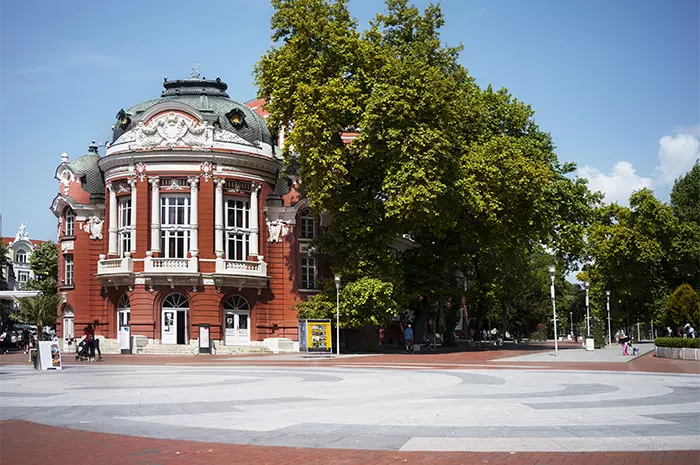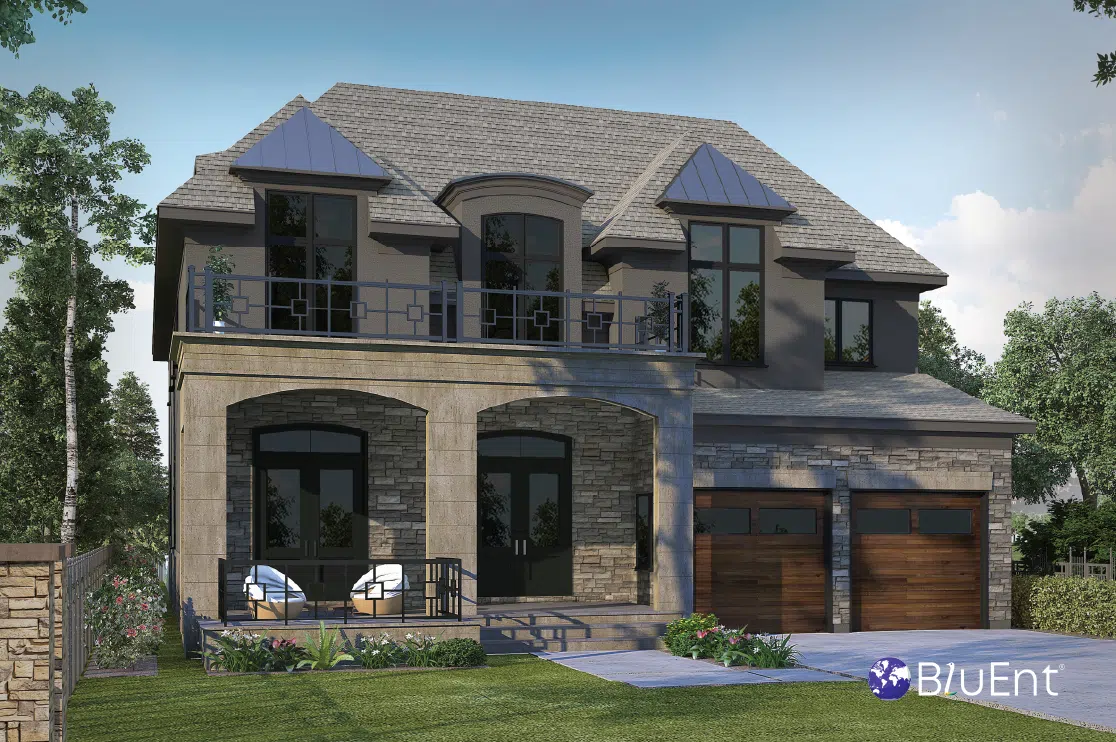If you take a walk down Elfreth’s Alley in Philadelphia, you’ll be met with quaint brick homes festooned with ornate front facades and elliptical fanlights.
This is a quintessential example of a style called Federal architecture that developed in the US in the late 18th and early 19th centuries. Along with colonial, Cape Cod, Victorian, and other architectural styles, it forms a part of historical American architecture that can be found scattered around the country.
But what is Federal architecture, and what are its primary features? In this article, we’ll cover it all so you know what to look for when constructing Federal style buildings.
Table of Contents:
Introduction
The Federal style, also called the Adam style, dominated the architectural landscape in the US from about 1785 to 1820. Some consider it a variation of the Georgian style, which sprang up in about 1700.
Federal architecture was a kind of revival of Roman architecture, and is often associated with Benjamin Latrobe and Thomas Jefferson. It eventually became a popular style for governmental buildings.
Generally, the term “Federal” refers to a period in US history when the Federal system of governance was being set in motion. During this period, many buildings came up that were influenced by popular architectural styles and elements in Europe.
Where Can You Find Federal Style Buildings?
If you want inspiration to construct a Federal-style building, you can find this type of architecture in many port cities, where there was a focus on developing efficient housing in well-planned cities.
Furthermore, Federal-style buildings are scattered along almost every city on the East Coast, from Georgetown to the seaport towns of New England. Some prominent Federal buildings include Tudor Place (1815) and Decatur House (1819) in DC and Woodlawn Plantation (1805) in Virginia.
If you want to see the oldest Federal-style house in the US, look no further than the White House. Of course, this iconic structure is more ornate than most Federal homes, but the columns flanking the entrance are typical of the more elaborate Federal houses of the time.
Whether you’re constructing a Federal style home or government infrastructure, here are the key elements of Federal architecture.
Key Elements of Federal-Style Buildings
- Federal-style buildings are usually rectangular or square-shaped and two to three stories high. In contrast, the interior spaces are often octagonal.
- Hipped roof or low-pitched side gables.
- Most Federal style structures are noticeably understated. Moldings and columns tend to be relatively simple and narrow.
- An emphasis on symmetry and balance. You can see this in the arrangement of chimneys, porches, windows, balustrades, and doors.
- Geometrical concepts are often showcased in decoration. Circular, elliptical, or fan-shaped motifs may be found.
- Windows tend to be double-hung with thin muntins to separate panes.
- Federal style architecture is usually not ornate. However, the entrance may contain decorative elements, such as Doric columns, fanlights, and leaded sidelights. Such features are usually meant to indicate the that an “important” person lives there.
- Some buildings may have attached dependencies or projecting wings. At times, you may find polygonal or curved floor plans, such as in the Octagon House (1799) in Washington.
- Building materials tend to vary by location. Houses in the South are usually made of brick, while those in the Northeast often feature clapboard siding. In the urban north, brick is common because of its fireproofing capacities.
- In the interior, there is often a hall in the center or on the side. There are also classical cornices, usually with modillions or dentil moldings.
Recommended Reading:
Federal vs Georgian-Style Buildings
One couldn’t be blamed for confusing a Federal home for a Georgian home. After all, many Federal features were borrowed from Georgian architecture, such as the symmetrical windows and flat façade.
However, there are a couple of ways you can tell them apart.
- Federal style buildings are typically more understated than Georgian style ones. They do not include the ornate details of Georgian buildings.
- They are more formal looking than Georgian buildings. Often, the front door will be flanked by sidelights so that it appears more stately and refined.
What Interior Design & Architectural Landscaping Work Best for Federal Style Buildings?
Whether you’re going for government building design or residential construction, here are the details you need to know about what works for modern Federal style structures.
Interior Design
- Maintain a traditional and simple look. Understated vintage pieces, as well as Victorian or Colonial farmhouse-style elements, work well. This will help give even a modern Federal-style building a historic look and feel.
- Most color palettes will work in Federal-style buildings. However, we recommend sticking to neutral colors with some accents for variety. Beige, warm cream, red, and rich wood tones will work well.
Landscaping
Architectural landscaping can help further refine the look and feel of the building, as well as increase the property’s resale value.
- Like the architecture, the landscaping of federal buildings tends to be symmetrical and central. This includes motor courts, flower beds, gates, walkways, hedges, trees, etc.
- Some gardens can be naturalistic, composed mainly of lawns, walkways, flowers, and thickets. This is notable in many historic large estates and rural cemeteries.
Living or working in a Federal-style building can give residents or workers a feeling of dignity and stateliness – all reflected from their surroundings. We hope this article has given you some inspiration if you are considering a new construction.
Having said that, all good, safe construction requires architectural documentation. BluEntCAD provides drafting services to homebuilders, large architectural and engineering companies, real estate developers, and custom home designers. Browse our portfolio to see how we’ve helped companies like yours.
Ready to construct a gorgeous building with the help of architectural construction documents? Contact us now!







 How 3D Architectural Visualization Boosts Property Pre-Sales?
How 3D Architectural Visualization Boosts Property Pre-Sales?  A Guide to 3D Condo and Apartment Rendering for Residential Projects
A Guide to 3D Condo and Apartment Rendering for Residential Projects  Details of Modern Ranch Style Open Floor Plans for Builders & Buyers
Details of Modern Ranch Style Open Floor Plans for Builders & Buyers  How 3D Landscape Designs for Exteriors Can Elevate your Property’s Value
How 3D Landscape Designs for Exteriors Can Elevate your Property’s Value